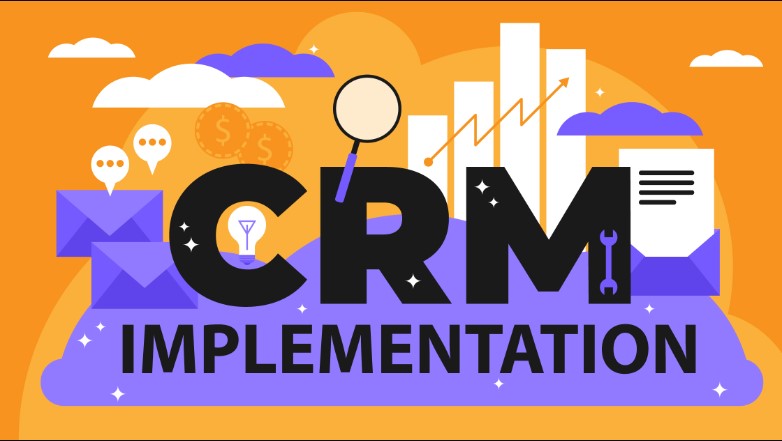CRM Implementation Tips In today’s competitive business landscape, Customer Relationship Management (CRM) systems play a crucial role in fostering meaningful customer relationships and driving business growth.
Implementing a CRM system effectively can significantly enhance operational efficiency, improve customer satisfaction, and streamline business processes. However, the process of CRM implementation requires careful planning, strategic execution, and ongoing support to ensure its success.
Understanding CRM Systems
Before diving into the implementation phase, it’s essential to grasp what CRM systems entail. A CRM system is a technology that helps businesses manage interactions with current and potential customers. It integrates various facets of customer relationship management, including sales, marketing, and customer service, into a single platform.
Importance of Effective CRM Implementation
Implementing a CRM system isn’t just about adopting new software—it’s about transforming how your organization interacts with customers. A well-executed CRM implementation can lead to improved customer retention rates, increased sales efficiency, and better decision-making based on comprehensive customer data.

Pre-Implementation Planning
Successful CRM implementation starts with meticulous planning and preparation. Here are crucial steps to take before embarking on the implementation journey:
Assessing Business Needs and Goals
Begin by conducting a thorough assessment of your organization’s specific needs and goals for implementing a CRM system. Identify pain points in your current processes that a CRM solution can address, such as inefficient lead management or disjointed customer communications.
Budgeting and Resource Allocation
Allocate adequate financial resources and manpower for CRM implementation. Consider costs associated with software licensing, customization, training, and ongoing support. Ensure that your budget aligns with your desired outcomes and the scale of implementation.
Selecting the Right CRM Software
Choosing the appropriate CRM software is pivotal to the success of your implementation. Evaluate different CRM solutions based on factors such as scalability, integration capabilities with existing systems, user interface intuitiveness, and vendor support. Opt for a CRM system that meets your current needs while allowing room for future growth.
Creating an Implementation Timeline
Develop a realistic timeline that outlines key milestones and deadlines for each phase of CRM implementation. Consider factors such as data migration complexities, customization requirements, and staff training schedules. A well-structured timeline helps keep the implementation process on track and minimizes disruptions to daily operations.
Implementation Phase
Once the planning stage is complete, proceed with the actual implementation of your chosen CRM system. Here’s how to ensure a smooth transition:
Customizing CRM According to Business Processes
Tailor the CRM software to align with your organization’s unique business processes and workflows. Customize fields, reports, and dashboards to capture relevant data points and facilitate seamless information flow across departments. Engage stakeholders from different teams to ensure that the CRM system meets their specific operational needs.
Data Migration Strategies
Implement robust strategies for migrating existing customer data from legacy systems or spreadsheets into the new CRM platform. Ensure data accuracy, integrity, and security throughout the migration process. Conduct thorough testing to identify and rectify any discrepancies before fully deploying the CRM system.
Training Staff on CRM Usage
Invest in comprehensive training programs to familiarize employees with the functionalities and benefits of the CRM system. Provide hands-on training sessions, user guides, and ongoing support to encourage adoption and utilization. Empower staff to leverage CRM tools effectively to enhance productivity and customer interactions.
Testing and Quality Assurance
Conduct rigorous testing of the CRM system’s functionalities to identify and address any bugs, errors, or performance issues. Perform user acceptance testing (UAT) with a sample group of employees to validate system usability and functionality across different scenarios. Implement necessary fixes and refinements based on feedback before rolling out the CRM system organization-wide.
Go-Live and Post-Implementation
Transitioning to the live phase marks the beginning of continuous optimization and refinement. Here’s how to ensure ongoing success and maximize the benefits of your CRM system:
Monitoring Performance Metrics
Establish key performance indicators (KPIs) to measure the impact of CRM implementation on business outcomes. Track metrics such as customer acquisition costs, customer retention rates, sales pipeline visibility, and user adoption rates. Regularly analyze data insights to identify areas for improvement and strategic decision-making.
Addressing Challenges and Roadblocks
Anticipate and address common challenges that may arise during and after CRM implementation. Proactively manage resistance to change among employees by fostering a culture of openness and continuous learning. Address technical issues promptly and provide timely support to mitigate disruptions to daily operations.
Continuous Improvement and Updates
Recognize that CRM implementation is an iterative process that requires continuous improvement and adaptation. Stay updated with software updates, new features, and industry best practices. Solicit feedback from users and stakeholders to identify opportunities for enhancing system functionalities and addressing evolving business needs.
Conclusion
In conclusion, effective CRM implementation is a transformative journey that requires strategic planning, meticulous execution, and ongoing commitment. By following these comprehensive tips and best practices, businesses can successfully set up their CRM systems for long-term success, enhanced customer relationships, and sustainable growth.